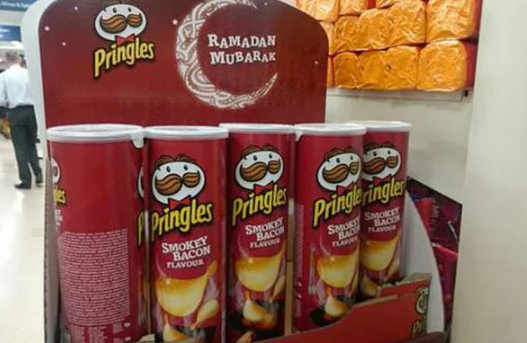I Love the color white. More than half of my wardrobe is brimming with blazers and jackets of varied shades of the color along with formal shirts and even some pants as well. The serenity of the color appeals to my heart and helps me retain my inner peace. Ironically, not everybody thinks along the same lines, as I discovered the hard way.
A week back, I went to India for a business trip where a colleague politely invited me over to a cultural family wedding. Enticed, I thought it’s going to be a great experience attending a tradition eastern wedding and delving in the Indian culture first hand. I was really looking forward to this affair, so I wanted to adorn myself in my best garb and make a great impression.
Dressed up in white, I sauntered through the entrance, feeling almost majestic in my crisp tailored tux. As I entered the marquee, the first thing I registered was looks of surprise and gasps greeting me every which way I ventured. It later dawned on me that elegant it no doubt is, white is considered the color of sorrow in the Indian culture, and inadvertently I had committed the crime of adorning this not so auspicious hue at a festive occasion. However, the hosts were kind enough to bear with me at the wedding and treated me rather affectionately and showered me with generous hospitality that truly left me entranced with the ethnic culture.
It was a treasured experience, but the event unveiled a thought in my mind: if I can make such a minor blunder with such seemingly intense implications, there are a plethora of brands that operate across different countries and have to contend with interacting with people hailing from diverse ethnic backgrounds and cultures. One element that is considered a blessing in one culture can mean something totally diabolical in the other, making it almost hard for those brands to avoid stepping on any digital toes. So I did my research and found out that there are certain campaigns that brands launched from cross-cultural nationalities which failed miserably due to lack of research and the difference of opinions.
Related: Mistakes to avoid while digitally re-branding your business
The “religious Blunder”
When reaching out to a culturally diverse audience, it is highly recommended that you perform a thorough research on the product that you are about to send out on your social media campaign. Make sure that your research is not a single sided social observation. You should be more of an empath and learn what others may think about your product from their religious point of view. Identify negative sinkholes and try to overcome them by reshaping your marketing strategy.
For instance, Ramadan is the holy month for people belonging to the Muslim community. In this month, the Muslims fast from dawn till dusk. Food consumption hikes in the holy month of Ramadan especially for the Muslim families, and therefore brands launch campaigns to get an edge over the competition and encash opportunities for better sale figures by launching targeted campaigns for the people who follow.
Unfortunately, this time the campaign backfired for Pringles, when Tesco marketed Bacon flavored chips to Muslims. In the holy month of Ramadan. Bacon is strictly forbidden in Islam and therefore, this campaign not only failed miserably but also rebounded due to its offensive nature. If that wasn’t bad enough, the store is in the vicinity of the Whitechapel’s East London Mosque. When amused Muslim shoppers passed by the display, Twitter brimmed over with outrageous messages! Tesco soon removed the aisle, with an extensive message of apology of course.
“We are proud to offer a wide range of meals and products to meet the needs of our customers during Ramadan. We recognize these Pringles weren’t in the most suitable place and our store colleagues have now moved them.”
Similarly, the grocery store Food Basics has viable presence of over 115 stores across the province of Ontario in Canada. When they aspired to reach out to more ethnic communities, the store printed out flyers incorporated a seemingly enticing offer intended for Sikhs on the event of Baisakhi (a Sikh religious holiday).
Where the brand went wrong is when they dared to promote Halal chicken to the Sikh community; a product intended for Muslims! Had the marketing personnel conducted their diligent research, they would never have targeted Sikhs in this manner, since the ethnic group refrains from consuming alcohol or meat on the occasion. Even worse, the very notion of Halal meat is not deemed fit for consumption for practicing Sikhs. This served to enrage Sikhs who were already fumed on being mistakenly confused for radical religious terrorists all the time.
The “contextual” Blunder
Words and imagery are powerful. They leave a substantial impact on your mind. If not delivered correctly, they can result in creating preposterous meanings; ones which weren’t intended to be delivered in the first place. Make sure to use the correct terminologies and pictures when marketing a product. Not all terminologies have the same impact on everyone as they are perceived. The best possible solution is to find a native in a specific culture and have them review your branding message before you craft it and market your product.
A humorous fail story is that of the Japanese company Matsushita Electric that got the task of promoting a new Japanese PC to its internet users. After Panasonic was done with the creation of the new web browser, they also got permission to leverage the cartoon character Woody Woodpecker as their interactive internet guide. The following slogan was featured for the ads: “Touch Woody – The Internet Pecker.” However, the company realized its cross cultural blunder just one day before the launch of their marketing campaign and pulled the plug, after an embarrassed American explained what the catchphrase “touch Woody’s pecker” is likely to be interpreted as in their country!
Similarly when we talk about the contextual errors in the use of imagery, purveyors of baby food and products Gerber inadvertently made an unsettling boo-boo when they decided to enter the African market. Their logo, incorporating the image of a happy cherub, is all too ubiquitous across the US markets, and is construed as the perfect image to adorn a product designed exclusively for toddlers. However, unbeknownst to them was the fact that products in certain African countries display images of what goes inside the product on the label. Image the gasps of shock from bewildered shoppers when they had to face the adorable Gerber baby staring back at them from the packaging!
 The “Consumer Habits” Blunder
The “Consumer Habits” Blunder
Personality and culture join hands to shape consumer behavior in different geographical regions of the world. When it comes to marketing a product to a foreign country, you need to consider all the psychological and societal factors that contribute to influencing buying decisions in the country that you are aspiring to market your products or services to.
For instance, Home Depot, Inc. is a home improvement company in the US that deals in construction materials, services, and tools. After experiencing success in the American market, they decided to expand their roots to the Asian market, mainly China.
The company had high hopes for their decision of carving a niche in China, however, the decision backfired, with the company having to shut down its operations in the country along with closing down 7 stores and firing 850 employees on average.
The main reason being the difference of thinking of the Chinese customers. Apparently, the Chinese buy properties with a main drive of investment, and not to improve their lifestyles. Also, the low labor cost makes it easier for them to hire external help rather than resort to doing things themselves. Therefore, the DIY notions of the American demographic just did not stick with the Chinse. Customer perceptions do make a lot of difference!
Another example is that of Walmart, a globally renowned supermarket chain that is famous for its low prices. After experiencing tremendous success in the United States, Walmart expanded its presence in various countries, however, not every country was a success story for them. It is the distinct cultural shopping experiences of consumers that turned the tables for Walmart in some countries they tried entering.
One example is South Korea, where Walmart failed to understand the buying preference of the local buyers. New York Times also reported a similar event that caused Walmart to shut down in Germany. In Japan as well, Walmart faced a negative backlash due to its campaign, tag lined, “Everyday low prices.” Apparently, in Japan, the locals associate low price tags with a lower quality product. This customer perception created a huge difference for Walmart in these countries where the usual marketing tactic did not work and resulted in a failed entry.
The “Language” Blunders
Language, especially when it comes to translation, needs a closer review since there have been a lot of fails when it comes to doing international marketing. International advertising is beset with embarrassing mistakes that surely didn’t help the companies make a mark or sell their product.
One such incident happened when the American automobile giant, General Motors launched one of its SKU, the Chevy Nova, in the Latin America, which failed miserably. The officials did not know what had hit them until someone pointed out that “Nova” means “It doesn’t go” in Spanish. A simple difference of meaning pushed a product into failure which was a success otherwise at a different cultural location.
Similarly, there have been countless examples of brand tag lines getting all distorted in translations. For example, when the slogan of Coors, “Turn it loose”, was translated into Spanish, it sounded like a colloquial term for having diarrhea. In another hilarious incident, Chinese KFC aficionados got really apprehensive when KFC’s famous slogan “Finger lickin’ good” became “Eat your fingers off” in translation.
Braniff International suffered the same fate when its slogan “Fly in Leather”, meant to tout its finely upholstered seats, took on different colors during translation and adopted the façade of “Fly Naked” in Spanish! Even better, when Pepsi expanded their market to China, their slogan “Pepsi brings you back to life”, got translated to “Pepsi beings your ancestors back from the grave!” Image the repercussions that the campaign of such a huge global magnitude must have had to face!
Key Takeaways:
These were only a few prominent brand-fail stories that have surfaced over the past years and go a long way towards clearly depicting how cultural research is indispensable for brands when they plan to expand at cross-cultural locations. In the digitally advanced age of today, getting to know about cultural implications has gotten fairly easy. Alternatively, there are also branding agencies in New York that can help organizations shape up their expansion plans and move away from failures due to such small-scale blunders that can result in devastating business circumstances.





 The “Consumer Habits” Blunder
The “Consumer Habits” Blunder



